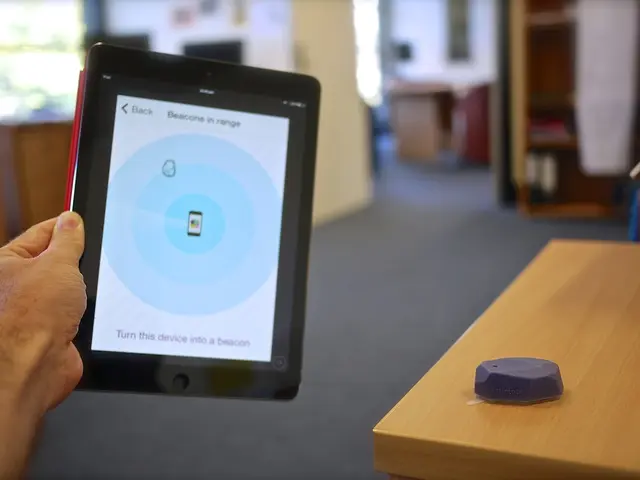Troubleshooting Robot Vacuum Issues: 5 Easy Solutions to Prevent Getting Stuck
Robot vacuums are becoming increasingly popular for their convenience and efficiency in keeping homes clean. However, to ensure they function optimally, there are several factors to consider.
Clearing Obstacles and Maintaining Sensors
To prevent your robot vacuum from getting stuck, it's essential to clear obstacles from its path. This includes small objects, cords, and loose rugs. You may also want to consider using ramps or transition strips to help it cross uneven surfaces or thresholds smoothly. To prevent getting stuck under furniture like couches, increasing the clearance height using spacers or modifying edges can be beneficial.
Regularly cleaning sensors is also crucial. Gently wipe sensors with a microfiber cloth to keep navigation accurate. Check and clean wheels and brushes for hair or fibers wrapped around them weekly to avoid mobility issues.
Handling Deep Carpets
Robot vacuums can struggle with high-pile carpets, shaggy rugs, or bathroom mats due to confusion with different textures and colors. Ensure your vacuum model is designed for your carpet type. Some models have advanced chassis or lift systems to handle taller thresholds between floors and hard surfaces more efficiently, reducing the chance of stalls.
Maintaining Battery Health
A faulty battery or unreliable charge can cause a robot vacuum to get stuck. Keep the robot fully charged before cleaning cycles and clean the charging contacts at least once a month on both the vacuum and base station to maintain reliable charging and avoid performance drops that may cause the vacuum to stall or fail.
Managing the Dustbin
Full dustbins can prevent the robot vacuum cleaner from functioning as it should. Empty the dustbin after each use or invest in models with self-emptying bins that can store weeks of dirt. In our tests, the Roborock Qrevo Curv could hold up to 75 days of dirt and debris before needing to be emptied.
Considering Additional Features
The Roborock Saros 10R is a hybrid robot vacuum and mop that exceeds expectations in pet hair pick-up on hard floors and carpet. It comes with advanced features including a FlexiArm Riser Side Brush, AI capabilities, and a great App. Some robot vacuums for pet hair come with an anti-tangle brush roll design to prevent excessive hair tangling.
Adjusting robot vacuum settings can help avoid certain areas in your home by setting up no-go zones via the device's mobile app. This feature can be particularly useful for homes with pets or sensitive areas that require extra care.
In conclusion, to prevent a robot vacuum from getting stuck, focus on clearing obstacles, cleaning sensors and brushes regularly, handling deep or high-pile carpets properly, maintaining battery health, and managing the dustbin status. Performing weekly light maintenance and deeper monthly cleanings helps sustain smooth operation. Additionally, consider adding ramps or transition strips to help your vacuum cross problematic surfaces more easily.
- To ensure efficient cleaning of deep carpets, it's important to choose a robot vacuum model designed for your carpet type, as some may struggle with high-pile carpets or shaggy rugs.
- Regularly cleaning sensors and brushes, and emptying the dustbin after each use will help in maintaining the accuracy of navigation, mobility, and general functioning of your robot vacuum.




